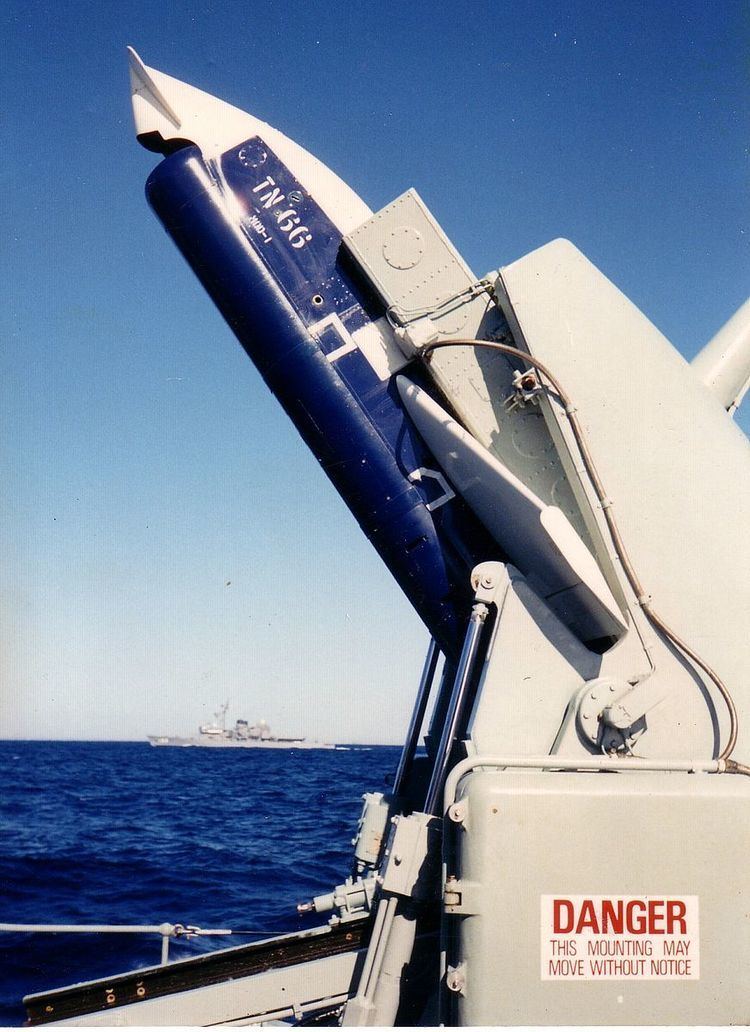 | ||
An anti-submarine missile is a standoff anti-submarine weapon. They include a missile or rocket designed to rapidly deliver an explosive warhead or homing torpedo, from the launch platform to the vicinity of a submarine.
Contents
History
Depth charges were the earliest weapons designed for use by ships against submerged submarines. These explosives were initially dropped as the ship moved over the presumed location of a submarine. Before World War II, shipboard sonar was unable to maintain contact with a submarine at close range.
Various mortar-type projectors, including hedgehog and squid, were devised during World War II to allow a ship to maintain sonar contact while lobbing explosive charges toward the submarine.
During the Cold War, missiles were developed to provide greater range with reduced recoil. Some missiles and rockets carry homing torpedoes to provide terminal guidance for the warhead.
